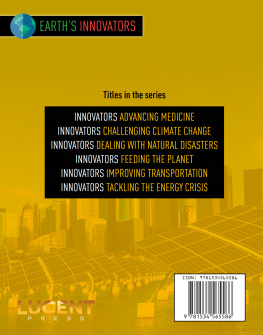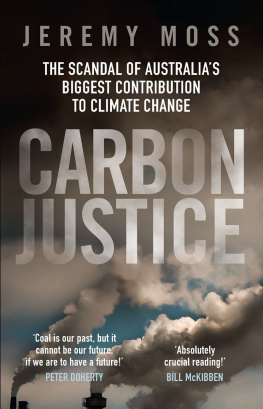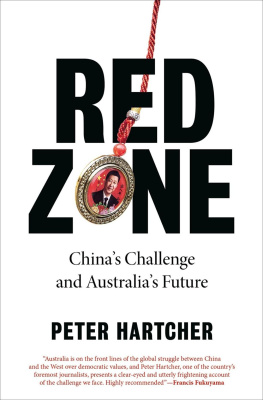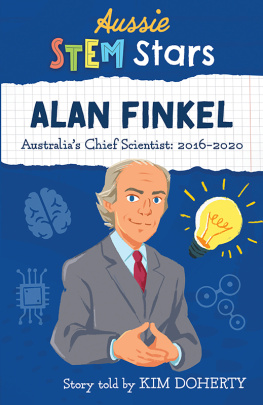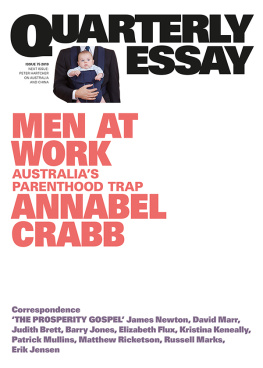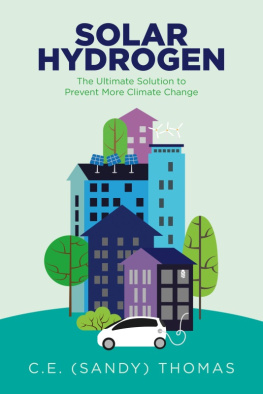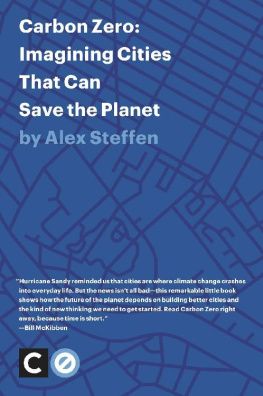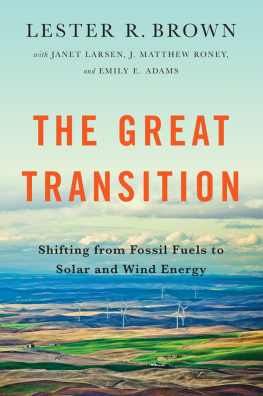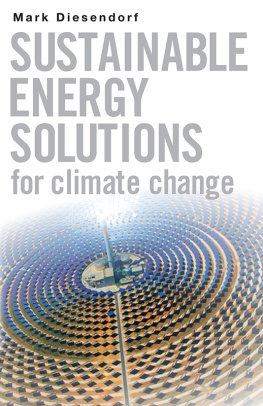Quarterly Essay is published four times a year by Black Inc., an imprint of Schwartz Books Pty Ltd.
Publisher: Morry Schwartz.
All Rights Reserved.
No part of this publication may be reproduced, stored in a retrieval system, or transmitted in any form by any means electronic, mechanical, photocopying, recording or otherwise without the prior consent of the publishers.
Essay & correspondence retained by the authors.
Subscriptions 1 year print & digital (4 issues): $79.95 within Australia incl. GST.
Outside Australia $119.95. 2 years print & digital (8 issues): $149.95 within Australia incl. GST. 1 year digital only: $49.95.
Payment may be made by Mastercard or Visa, or by cheque made out to Schwartz Books. Payment includes postage and handling.
To subscribe, fill out and post the subscription card or form inside this issue, or subscribe online:
Editor: Chris Feik. Management: Elisabeth Young. Publicity: Anna Lensky. Design: Guy Mirabella. Assistant Editor: Kirstie Innes-Will. Production Coordinator: Marilyn de Castro. Typesetting: Tristan Main.
GETTING TO ZERO | Australias Energy Transition |
Alan Finkel |
You never change things by fighting the existing reality. To change something, build a new model that makes the existing model obsolete.
Buckminster Fuller
PLANNED OBSOLESCENCE
Like others, I dream that my great-grandchildren, whom I might never meet, will grow up living on a planet just as magnificent as it was when I was young. Fulfilment of this dream will require that we preserve our planets unique beauty in the face of global warming, armed with ambition and realism. We do not have time for fatalism or despair.
Achieving net-zero emissions will be difficult, but is not impossible. We cannot simply shut down the use of fossil fuels overnight, because our civilisation needs energy. Instead, we must harness science and technology to develop alternatives that make fossil fuels obsolete. We must replace our nineteenth-century energy sources with 21st-century alternatives: low-emissions technologies that will undo the problems wrought by the high-emissions incumbents. Technology to solve technologys problems. This will take an adaptive, technology-based plan to maintain our quality of living and reap the benefits of the transition.
The plan will involve a massive global commitment to solar, wind and hydro (and, in some countries, nuclear) electricity, to transmission lines and storage, distributed generation and variable loads. We will need to change the way we farm food and process it, our vehicles and transport systems, our building designs and heating and cooling systems, our industrial processes. And we will need effective, affordable geosequestration and biosequestration to deal with the hard-to-abate emissions that will remain with us despite all these efforts.
A meeting of the minds is required, so that we can use tools that are good, but not perfect, to accelerate the transformation. For most of us, the motivation for a switch to clean energy is to mitigate climate change. That is reason enough. But shifting to a net-zero-emissions economy has other advantages. It will rid us of our dependence on a finite resource fossil fuels and it will ensure better air quality, cheaper energy, and participation in a global economic transformation. Thus, even those who are not convinced about the threat posed by climate change should be enthusiastic about the transformations that are underway and contemplated, because they will ultimately contribute to prosperity, new exports and a healthier environment.
We are in the early stages of an energy revolution. The industrial revolution began with the use of coal to create steam for industry and for locomotion. Note, though, that coal did not replace the use of wood, dried manure and other biomass for heating. Instead, it massively expanded energy use. Along came oil. It eventually displaced the use of coal for locomotion in trains and ships, but not for steam and electricity production. Along came natural gas. It eventually displaced the use of town gas made from coal, and much of the use of oil for heating, but not for transport and electricity production. Since the start of the industrial age, these three fossil fuels coal, oil and natural gas have added to our total fuel use rather than replacing the old. This additive adoption of new fuels has resulted in greenhouse gas emissions increasing year after year.
The latest energy revolution, already underway, is different. Electricity from renewable energy (and in some countries from nuclear) will eventually completely replace all three fossil fuels as energy sources. Oil and natural gas will likely remain as chemical feedstocks in some manufacturing, but their use as a fuel will fade into obsolescence. The burning questions are: how long will that take? Can we accelerate the process? Can we do so while reaping economic benefits and creating new jobs to replace the old?
This essay traces a pathway to a clean-energy future for Australia, a crucially important task that I began to dabble in before my five-year term as Australias chief scientist began, and which turned out to be a major component of my work in that role, way beyond anything I imagined when I started. I tackle some of the controversial and difficult questions, such as the role of natural gas in the coming decades, and share some confounding personal moments from Australias recent climate debate. But my overarching thesis is that just as nineteenth-century technology has brought us to an urgent moment in the history of our planet, 21st-century technology will light the way forward.
Change is in the air. The global momentum and enthusiasm for solar and wind as our future primary energy sources, supported by big batteries, hydrogen, other storage technologies, distributed energy generation, managed loads and digital technologies, across all sectors of our economy, including transport and industry, is growing every day. I sense we will live through a technological revolution this decade as exciting as the conquest of space in the 1960s.
If Australia handles the challenge well, we can build an economy that takes advantage of the transition. If we cling to the past, we will miss opportunities that the rest of the world will seize. The last thing we want is to be cave dwellers, watching the future march back and forth outside the cave opening. The scale of the job is vast and it will take decades. But we must be part of the revolution rather than left behind. As the Borg said in Star Trek: The Next Generation: Resistance is futile.
GLOBAL WARMING: SOME FACTS
Global warming is real and anthropogenic caused by humans. Our planet is overheating because of greenhouse gas emissions associated with modern civilisation. The consequence is a changing climate.
This reality is made abundantly clear by temperature graphs. As Figure 1 shows, Australias average air temperature has risen 1.4C since national records began in 1910. And the past decade was hot. Really hot. In fact, a ten-year-old in Australia today has already lived through eight of the hottest years in our recorded history.
Figure 1: Temperature rise since 1910 in Australia

Source: CSIRO and BOM, State of the Climate


